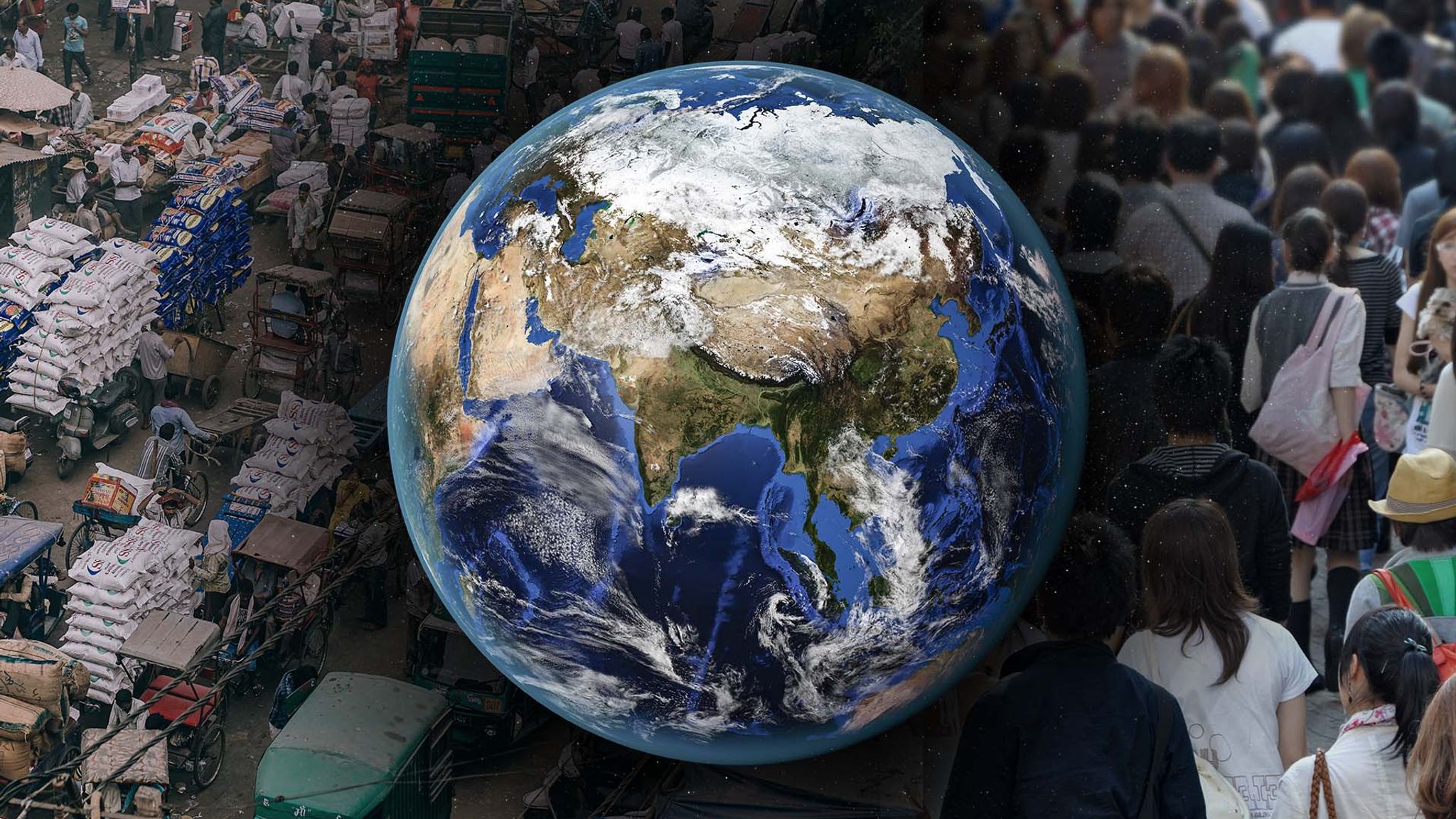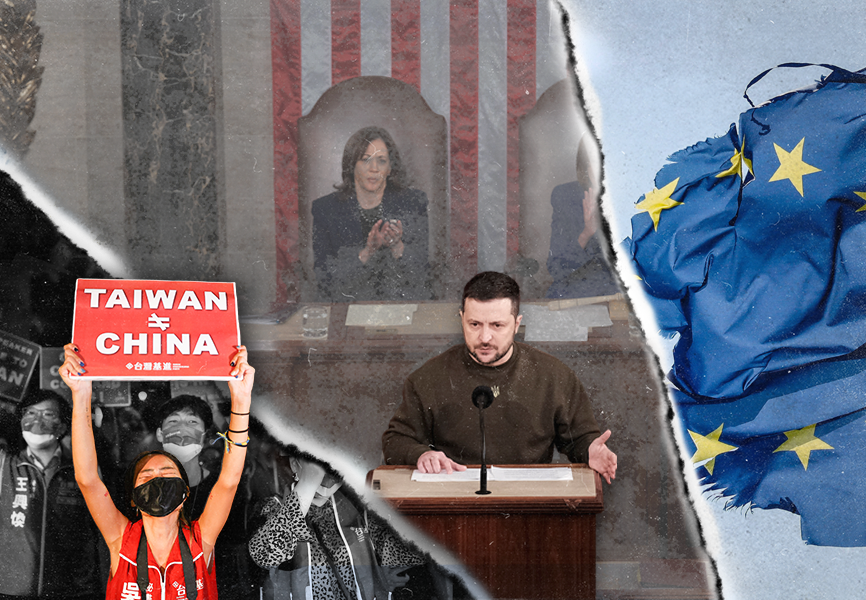10 Imminent Political Risks Threatening the Global Arena in 2023

The people of the Earth recently celebrated the year 2023, bidding farewell to a turbulent year that witnessed various political, sports, social, and economic events, the most prominent of which were: The war in Ukraine and its repercussions represented by energy crises, record inflation, new political alliances, and climate change crises; as well as Argentina’s winning in the Qatar World Cup, and the death of prominent figures, the latest of which was Pope Benedict XVI.
Prior to that, COVID variants had been spread in a wide area of the world, especially in China, and sparked terror and the subsequent repercussions that affected the global economy, the consequences of which still remain to this day, as international research centers expect the global economy to witness more recession.
Recently, American researchers at the Atlantic Council Mathew Burrows, who retired in 2013 from a 28-year career in the US intelligence and State Department, and Robert Manning, who worked as a former US State Department official, predicted many crises awaiting the world on the political and economic levels.
The two researchers monitored the expected global risks in 2023 and explained, in their lengthy research published by the National Interest magazine, each of these ten risks, although many of these risks are considered to be multifaceted and intertwined with each other.
Global Political Risks
On December 19, 2022, the National Interest highlighted the top ten political risks that the world might face in 2023, according to predictions by researchers Mathew Burrows and Robert Manning, who have long been specialists in forecasting global risks and trends at the National Intelligence Council of the US intelligence community.
The Atlantic Council stated that the forecasts of experts point to political turmoil throughout the democratic world with thick shadows of a global economic recession.
The researchers saw that their expectations for the probability of each risk are divided into low, medium, high, and in between, indicating that the average probability means the chance of the risk occurring by 50/50.
The two researchers summarized the risks as follows: a polycrisis resulting from the Ukraine war, the manner and timing of its end is still a mystery, especially since an escalation is expected if the United States or the North Atlantic Treaty Organization (NATO) sends additional advanced weapons to Kyiv in response to Putin’s bombing, in addition, the possibility of Russia’s use of nuclear weapons, as seen by the researchers, is higher than average.
While the second prediction was regarding the increase in food insecurity, as hunger and malnutrition will extend across the world from Central America and then east to the Horn of Africa, Syria, and Yemen, to Pakistan and Afghanistan, given that the number of people facing acute food insecurity increased from 135 million in 2019 to 345 million; the potential for this risk here is high.
As for the third prediction, it is what may result from the unprecedented protests inside Iran with the possibility of a military escalation against it, as there will be a strong and dangerous conflict between Iran, the United States, and “Israel” together or with one of them.
In addition, Iran’s supply of drones and missiles to Russia, the increase in uranium enrichment, and its near possession of a nuclear bomb added a new dimension to the confrontation and an impetus to impose new sanctions on it; the possibility of confrontation here is high.
As well as the exacerbation of the debt crisis in the developing world, where the United Nations Development Program (UNDP) warned that 54 low and middle-income countries suffer from severe debt problems, and these countries represent 18% of the world’s population; the possibility of this risk here is above average.

There are also fears of a regional or global financial crisis crystallizing, as the debts of governments, companies, and households have been increasing over the past four to five years, according to the International Institute of Finance (IIF).
According to expectations, the polycrisis represented by high-interest rates, the rise of the dollar, recession in Europe, the weak Chinese economy, and doubts about the future of the war in Ukraine may lead to another regional or even global financial crisis, and the possibility of this risk here is medium.
There is also a possibility that tensions between the United States and China will worsen further, as there are still fundamental differences between the two parties over Taiwan, which is likely to stop the international effort, and the possibility of this happening is high.
In addition to Beijing’s claims to recognize its questionable territorial control over the South and East China Seas, the possibility here is above average.
Estimates also indicate that the Chinese-American technological war is intensifying, especially in the field of semiconductors, which is involved in many consumer goods, which is likely to affect all industrial commodity markets and increase their costs as consumer choice recedes, with China’s access to many foreign products undermined.
Perhaps the most dangerous of the above may be the exacerbation of the effects of climate change, as most researchers and scientists believe that the world will soon reach an inevitable increase of 2.2 degrees Celsius if countries do not commit to reducing 43% of the total emissions of global warming gasses, which means more droughts and floods, as well as serious changes in precipitation patterns that can spoil crop yields.
The latest predictions are a serious impasse on the Korean peninsula, as Pyongyang’s ongoing testing of up to 86 ballistic, cruise, and tactical nuclear-capable, kinetic, medium-range, and intercontinental missiles in 2022 is part of North Korea’s plan to create an arsenal of effective second-strike weapons, which may give it more ability to attack and put pressure on the West; the possibility of that is above average.

Turbulent Year
Many around the world were eagerly awaiting a new year, hoping to get rid of the year 2022, which was not easy in any aspect and without any of the preventive measures against the Coronavirus that were imposed in the past few years.
In the past year, mass layoffs of employees of major international companies were recorded following the Coronavirus crisis and the shrinking fortunes of billionaires due to the deterioration in the value of cryptocurrencies.
On the other hand, the world population crossed the historical threshold of eight billion people in November.
But above all, the world will always remember the year 2022 because it witnessed the return of war to Europe with the Russian invasion of Ukraine on February 24.
Last year also saw the deaths of Queen Elizabeth II, Brazilian football legend Pele, ex-Soviet leader Mikhail Gorbachev, ex-Chinese leader Jiang Zemin, ex-Japanese Prime Minister Shinzo Abe, and finally, ex-Pope Benedict XVI.

It is noteworthy that the risks identified by the Atlantic Council researchers for the year 2022 were somewhat within their weightings, as they expected that the COVID variables would remain a source of concern, especially in China, with the decline in Chinese economic growth;
They also predicted a Russian invasion of Ukraine and oil prices reaching $100 a barrel, which they did earlier last year, even though energy prices fell somewhat in the second half of last year;
Their previous predictions also highlighted food shortages, economic crises, and growing debt problems among developing countries, such as Sri Lanka and Pakistan, which are already still facing this reality;
As well as their predictions of a decrease in the fight against climate change, which was demonstrated at COP27, as well as the persistence of tensions between China and the United States.








